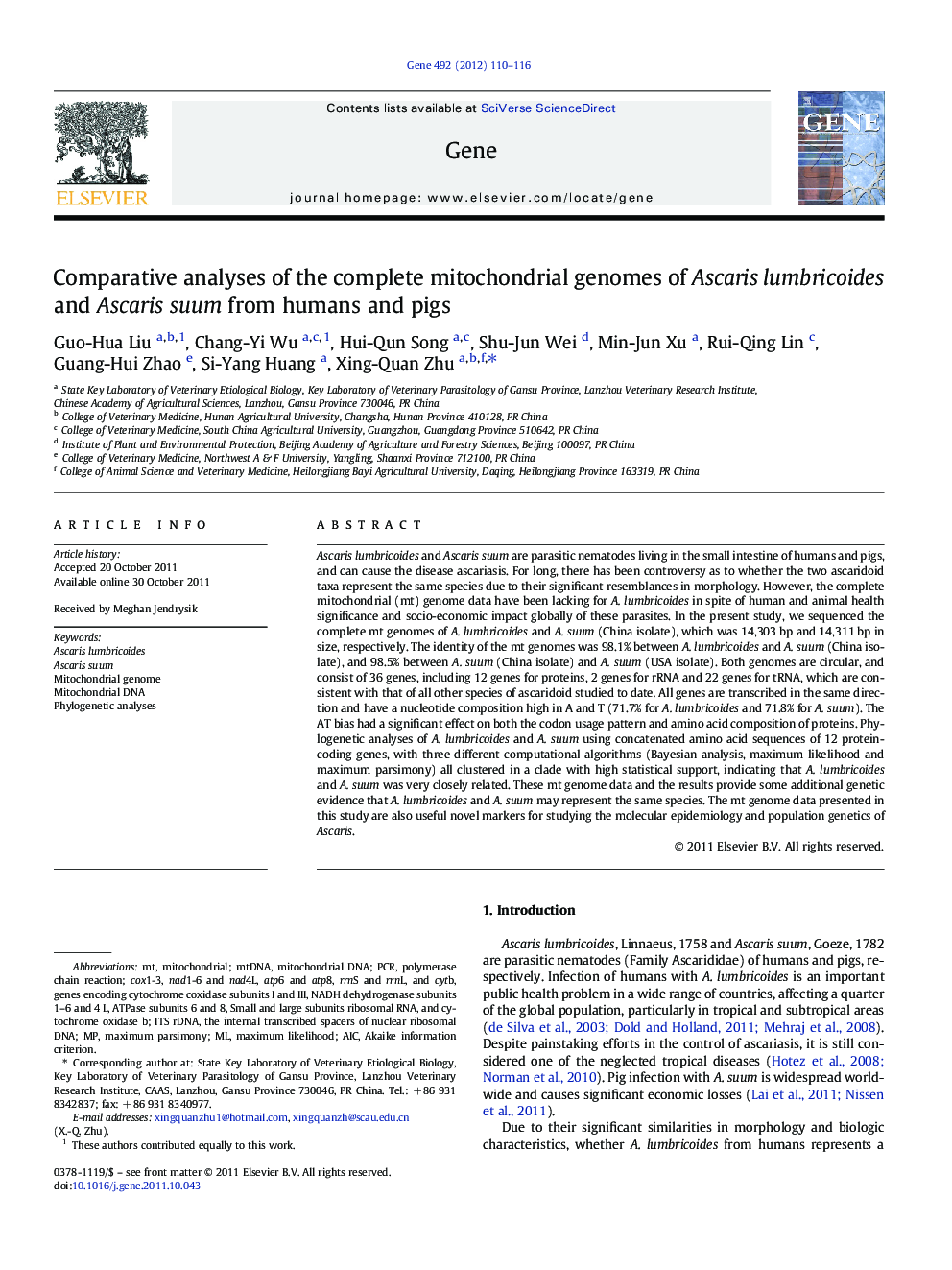| Article ID | Journal | Published Year | Pages | File Type |
|---|---|---|---|---|
| 2818151 | Gene | 2012 | 7 Pages |
Ascaris lumbricoides and Ascaris suum are parasitic nematodes living in the small intestine of humans and pigs, and can cause the disease ascariasis. For long, there has been controversy as to whether the two ascaridoid taxa represent the same species due to their significant resemblances in morphology. However, the complete mitochondrial (mt) genome data have been lacking for A. lumbricoides in spite of human and animal health significance and socio-economic impact globally of these parasites. In the present study, we sequenced the complete mt genomes of A. lumbricoides and A. suum (China isolate), which was 14,303 bp and 14,311 bp in size, respectively. The identity of the mt genomes was 98.1% between A. lumbricoides and A. suum (China isolate), and 98.5% between A. suum (China isolate) and A. suum (USA isolate). Both genomes are circular, and consist of 36 genes, including 12 genes for proteins, 2 genes for rRNA and 22 genes for tRNA, which are consistent with that of all other species of ascaridoid studied to date. All genes are transcribed in the same direction and have a nucleotide composition high in A and T (71.7% for A. lumbricoides and 71.8% for A. suum). The AT bias had a significant effect on both the codon usage pattern and amino acid composition of proteins. Phylogenetic analyses of A. lumbricoides and A. suum using concatenated amino acid sequences of 12 protein-coding genes, with three different computational algorithms (Bayesian analysis, maximum likelihood and maximum parsimony) all clustered in a clade with high statistical support, indicating that A. lumbricoides and A. suum was very closely related. These mt genome data and the results provide some additional genetic evidence that A. lumbricoides and A. suum may represent the same species. The mt genome data presented in this study are also useful novel markers for studying the molecular epidemiology and population genetics of Ascaris.
Graphical abstractFigure optionsDownload full-size imageDownload high-quality image (185 K)Download as PowerPoint slideHighlights► The complete mt genomes of A. lumbricoides and A. suum were determined. ► A. lumbricoides and A. suum differed by 1.5-1.9% in mt genome sequences. ► A. lumbricoides and A. suum was very closely related phylogentically. ► A. lumbricoides and A. suum may represent the same species based on mtDNA dataset. ► mtDNA sequences are useful novel markers for studying Ascaris population genetics.
